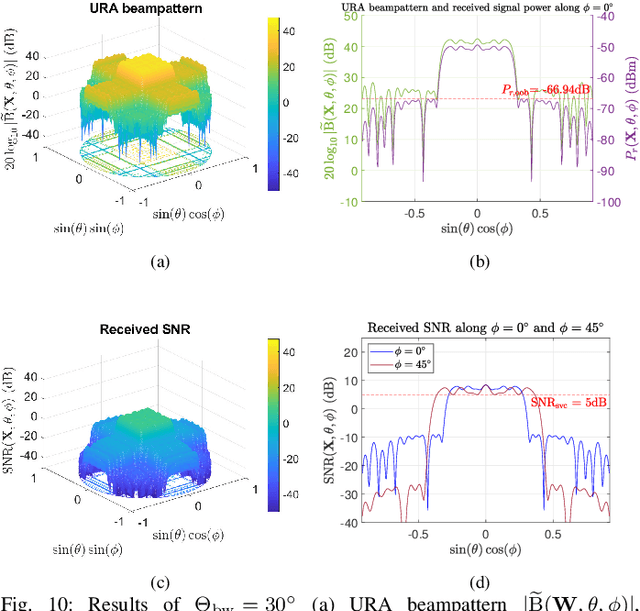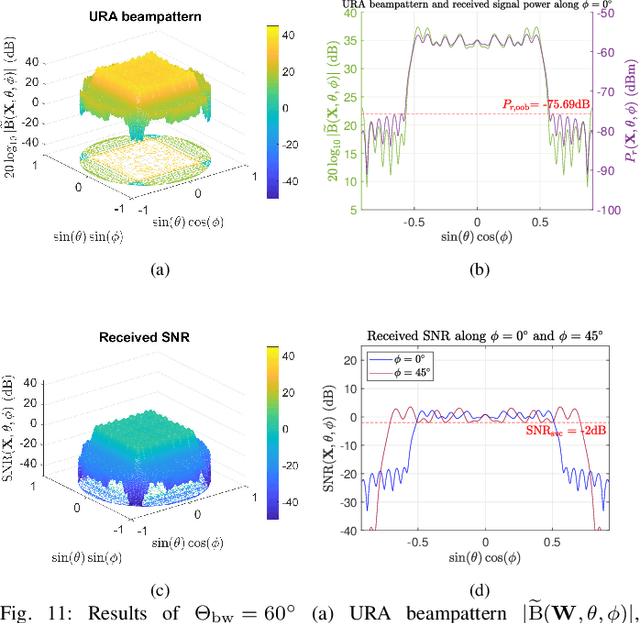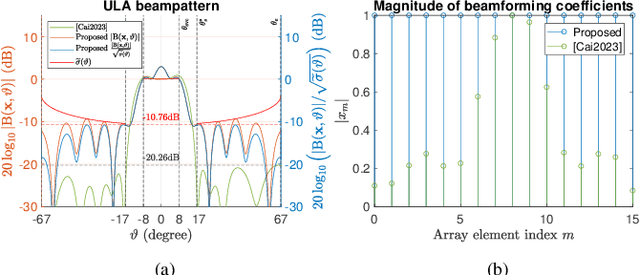Weiting Lin
Unimodular Waveform Design that Minimizes PSL of Ambiguity Function over A Continuous Doppler Frequency Shift Region of Interest
Apr 08, 2025Abstract:In active sensing systems, waveforms with ambiguity functions (AFs) of low peak sidelobe levels (PSLs) across a time delay and Doppler frequency shift plane (delay-Doppler plane) of interest are desirable for reducing false alarms. Additionally, unimodular waveforms are preferred due to hardware limitations. In this paper, a new method is proposed to design unimodular waveforms with PSL suppression over a continuous Doppler frequency shift region, based on the discrete-time ambiguity function (DTAF). Compared with existing methods that suppress PSL over grid points in the delay-Doppler plane by using the discrete ambiguity function (DAF), we regard the DTAF optimization problem as of more practical interest because the Doppler frequency shifts observed in echo signals reflected from targets are inherently continuous rather than discrete. The problem of interest is formulated as an optimization problem with infinite constraints along with unimodular constraints. To the best of the authors' knowledge, such a problem has not been studied yet. We propose to reformulate a non-convex semi-infinite programming (SIP) to a semidefinite programming (SDP) with a finite number of constraints and a rank-one constraint, which is then solved by the sequential rank-one constraint relaxation (SROCR) algorithm. Simulation results demonstrate that the proposed method outperforms existing methods in achieving a lower PSL of AF over a continuous Doppler frequency shift region of interest. Moreover, the designed waveform can effectively prevent false alarms when detecting a target with an arbitrary velocity.
Broadened-beam Uniform Rectangular Array Coefficient Design in LEO SatComs Under Quality of Service and Constant Modulus Constraints
Mar 12, 2024



Abstract:Satellite communications (SatComs) are anticipated to provide global Internet access. Low Earth orbit (LEO) satellites (SATs) have the advantage of providing higher downlink capacity owing to their smaller link budget compared with medium Earth orbit (MEO) and geostationary Earth orbit (GEO) SATs. In this paper, beam-broadening algorithms for uniform rectangular arrays (URAs) in LEO SatComs were studied. The proposed method is the first of its kind that jointly considers the path loss variation from SAT to user terminal (UT) due to the Earth's curvature to guarantee quality of service (QoS) inspired by the synthesis of isoflux radiation patterns in the literature, constant modulus constraint (CMC) favored for maximizing power amplifier (PA) efficiency, and out-of-beam radiation suppression to avoid interference. A URA design problem is formulated and decomposed into two uniform linear array (ULA) design subproblems utilizing the idea of Kronecker product beamforming to reduce the computational complexity of designing URA.The non-convex ULA subproblems are solved by a convex iterative algorithm. Simulation results reveal the advantages of the proposed method for suppressing out-of-beam radiation and achieving design criteria. In addition, channel capacity evaluation is carried out and shows that the proposed ``broadened-beam" beamformers can offer capacities that are at least four times greater than ``narrow-beam" beamformers employing an array steering vector when beam transition time is taken into account. The proposed method holds potential for LEO broadcasting applications such as digital video broadcasting (DVB).
 Add to Chrome
Add to Chrome Add to Firefox
Add to Firefox Add to Edge
Add to Edge